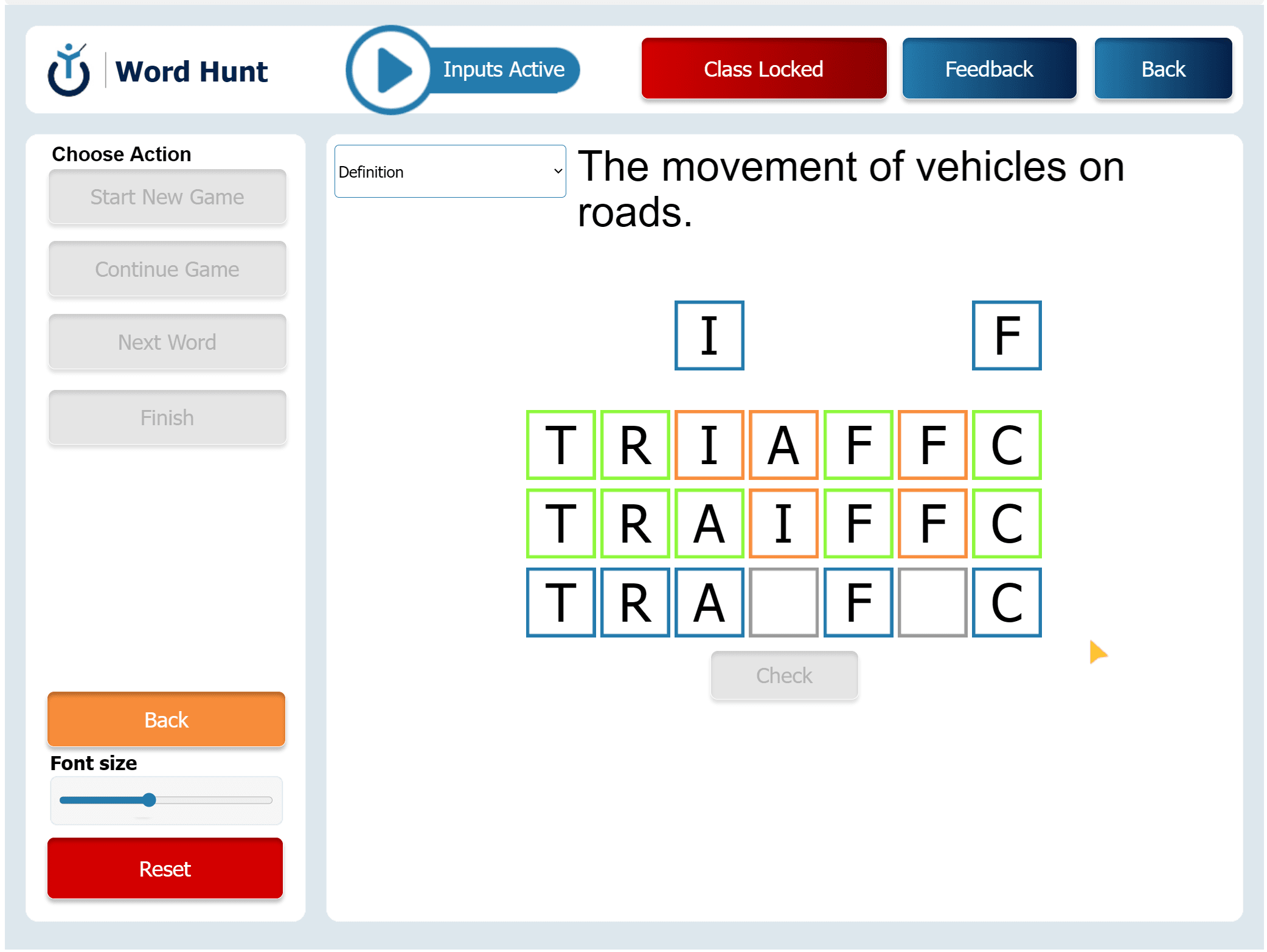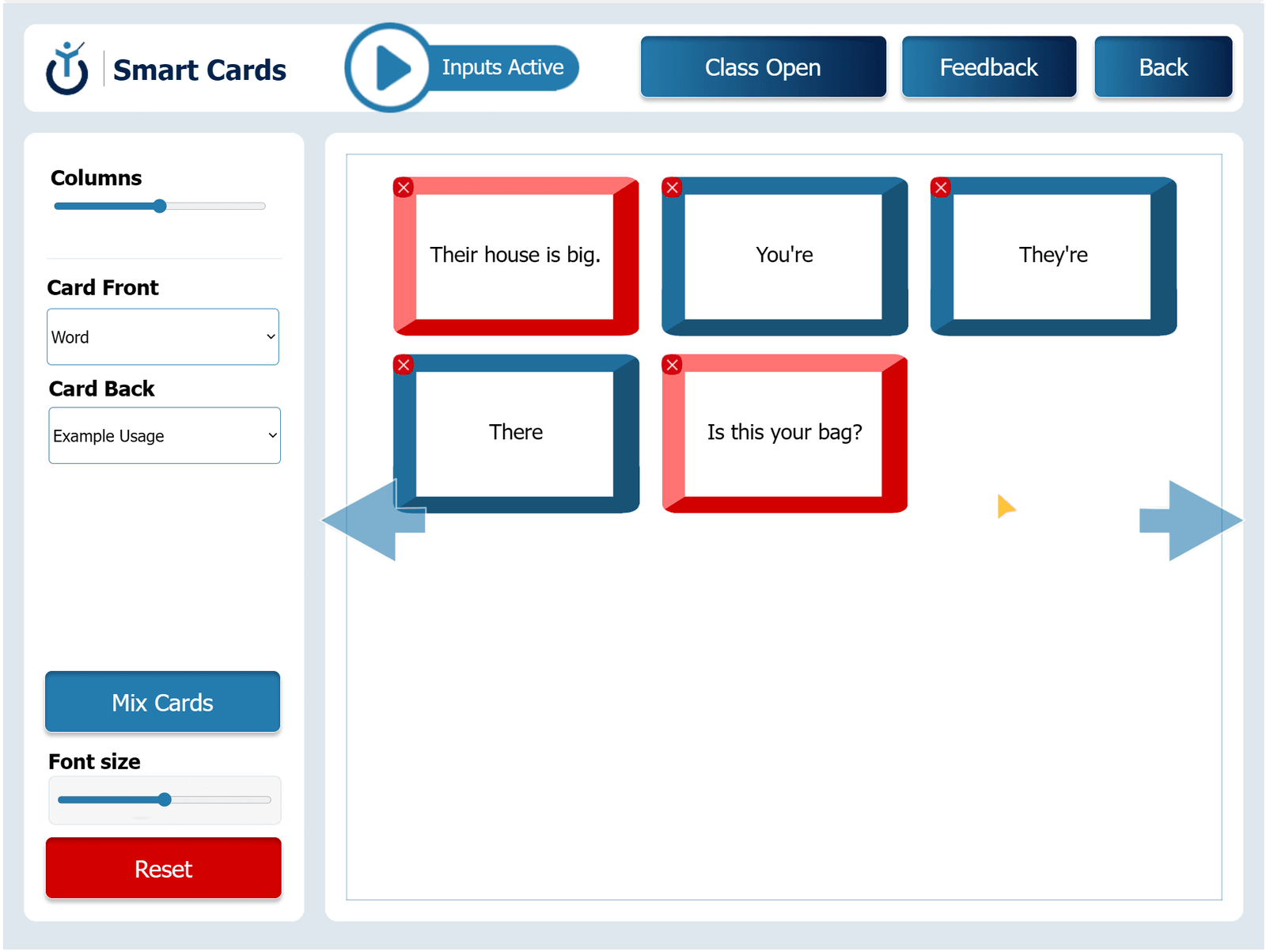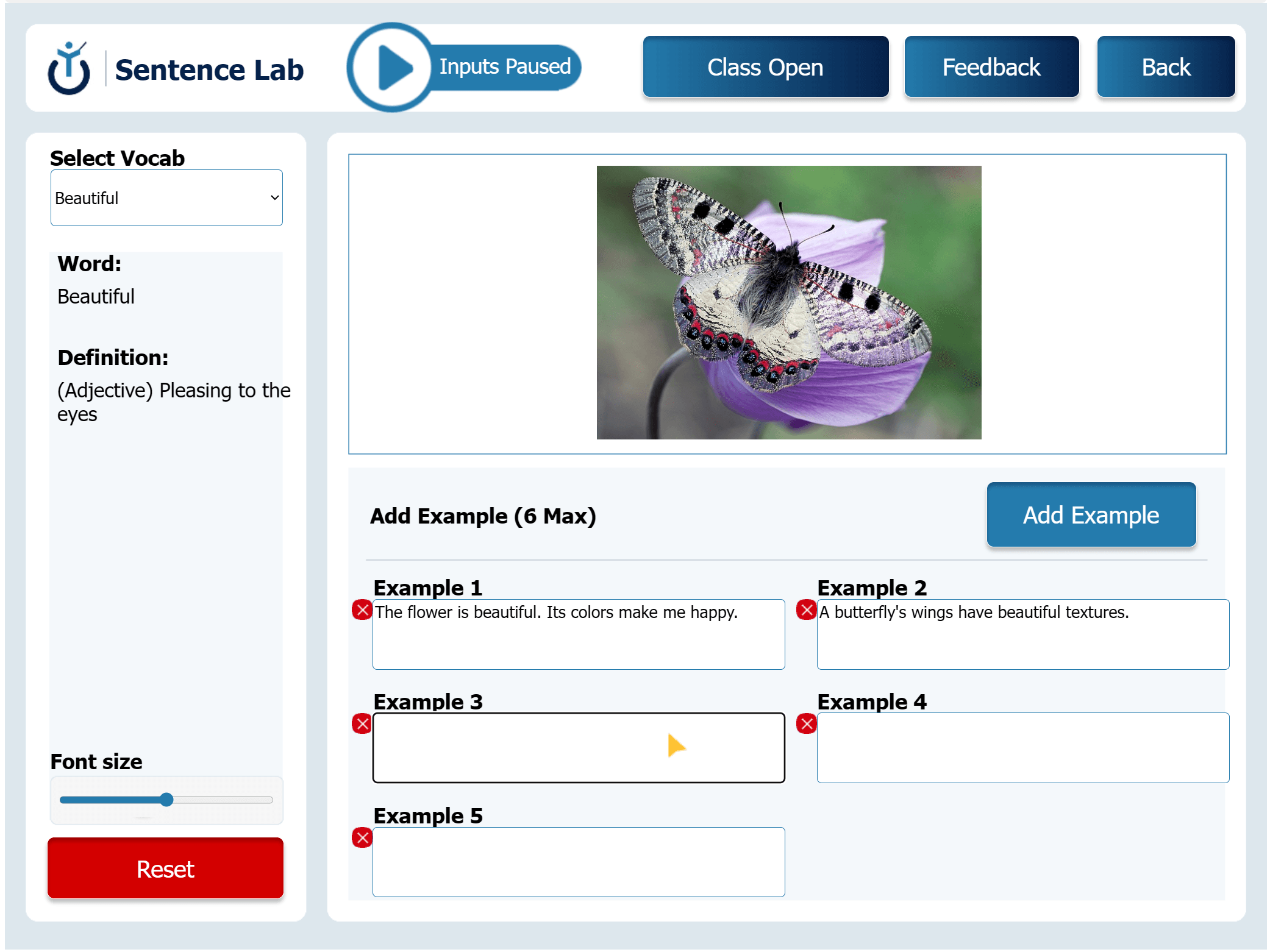Word Hunt helps students practice vocabulary by guessing a word from a group of letters. They drag the letters to spell the correct word. At first, there are no hints. After each wrong guess, the system shows a clue like the word’s part of speech or meaning. Students have five chances. Teachers can help before and after the game using the ideas below.
Warm-Up Riddle
Objective: Introduce the word without showing it directly.
Instructions: Before starting Word Hunt, the teacher gives a fun riddle or clue for the word. For example: “You see it in the city. It can be slow or fast. People often complain about it.” Students guess what it might be, then begin the game.
Follow-up: After the word is solved, compare it to the riddle. Ask: “Was the clue helpful? Why or why not?”
Sound It Out
Objective: Practice hearing and spelling common sound patterns.
Instructions: After students finish the word, the teacher says it slowly, then clearly. Together, they clap out the syllables and listen to the tricky sounds (like double letters or silent letters). Write the word and highlight its spelling pattern.
Follow-up: Ask: “Can you think of another word that has the same sound?” (For example, “traffic” → “cubic” has a similar -ic ending sound.)
Category Quick Talk
Objective: Use vocabulary to talk about real-life topics.
Instructions: After the correct word is found, ask: “What category does this word belong to?” For example, if the word is “passport,” the category might be “travel.” Students name more words from the same group.
Follow-up: Write the list on the screen. Ask students to make short sentences using any of the words.
Sentence Builder
Objective: Use the new word in a full sentence.
Instructions: When students finish the word, they think of a simple sentence using it. The teacher gives a sentence starter if needed (e.g., “There was a lot of traffic when I…”).
Follow-up: Students say or write their sentences. The teacher helps correct and expand them.
Spelling Spotlight
Objective: Focus on spelling rules found in the word.
Instructions: After solving the word, the teacher shows how the word is built. Highlight parts like: “double letters,” “silent e,” or common endings like “-tion” or “-ing.”
Follow-up: Students try spelling two new words with the same rule. For example: if the word was “running,” students could try “swimming” or “stopping.”







